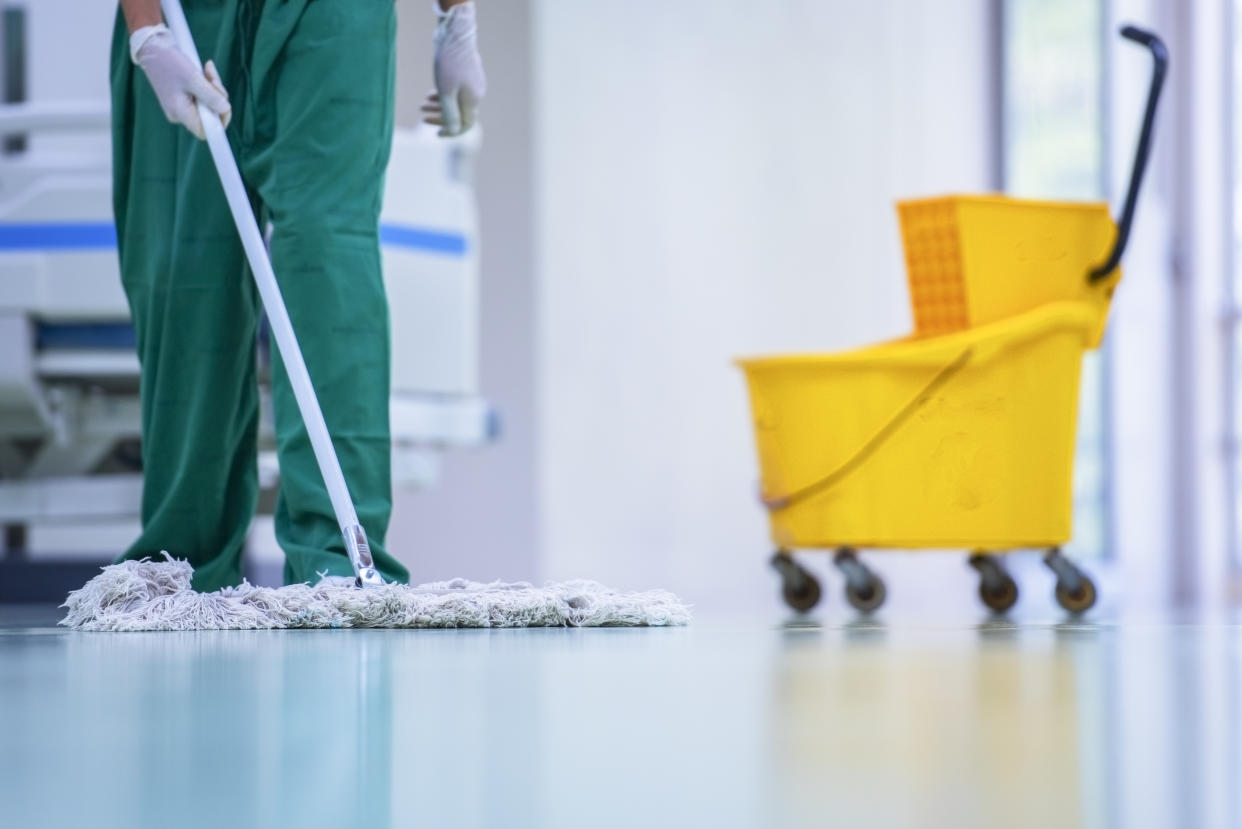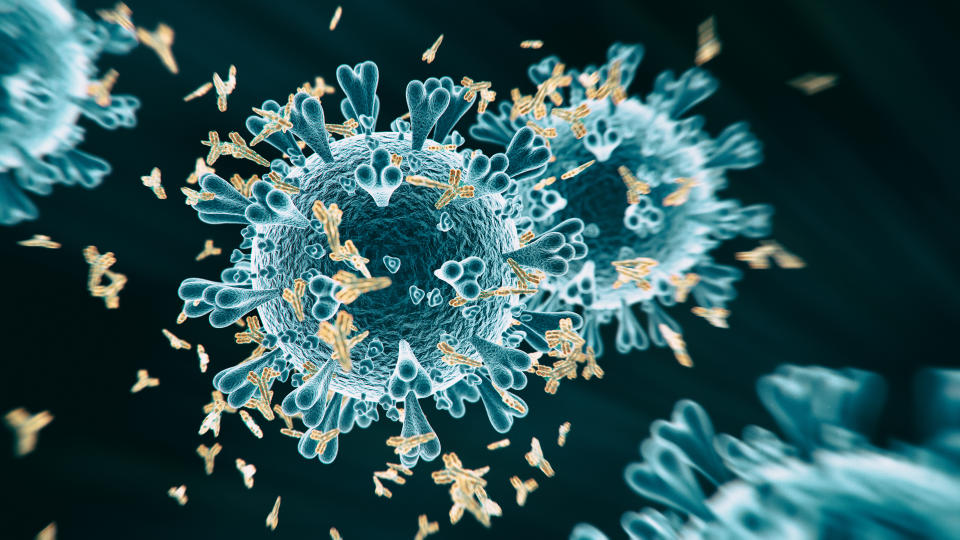Coronavirus risk highest among cleaners and BAME workers in one NHS trust

A study has suggested the risk of catching the coronavirus could vary among different hospital workers.
A team of medics looked into infection rates among staff at University Hospitals Birmingham NHS Foundation Trust (UHBFT) – which saw five seriously ill coronavirus patients being admitted an hour at the height of the UK’s outbreak.
Results revealed “striking differences” between the workers, with more than a third (34.5%) of the cleaners testing positive for coronavirus antibodies – a sign they had overcome the infection.
Read more: One in 100 hospitalised COVID patients in UK has a punctured lung
Working on the intensive care unit, however, was linked to a 72% reduced risk of carrying the antibodies compared with other parts of the hospitals. The scientists wondered if this was down to “enhanced personal protective equipment”.
The team also picked up on an ethnic divide, with workers of black, Asian and ethnic minority (BAME) backgrounds being nearly twice as likely to test positive for coronavirus antibodies as their white colleagues.

‘We are all key workers, travelling on public transport’
UHBFT is one of the largest hospital trusts in the UK, with more than 20,000 employees caring for 2.2million people every year.
At the peak of the UK’s coronavirus outbreak, national NHS staff testing capacity was not in place, according to the team of medics.
Many workers could therefore have been unaware they had the infection, passing it on to patients.
“You’ve got to remember we are all key workers, so travelling on public transport, and out and about,” said lead author Professor Alex Richter.
To uncover the rate of infection among UHBFT staff, the medics used social media to invite the trust’s workers to get tested.
Read more: Doctor describes ‘bone-deep weariness’ of working amid a pandemic
“I’ve never recruited to a study so fast in my life,” said Professor Richter. “We recruited 545 staff in 20 hours.”
The workers were offered nose and throat swabs to uncover if they were carrying the coronavirus, as well as blood tests to reveal any antibodies.
Antibodies are proteins released by the immune system to help fight off an infection. Once a virus has been overcome, “memory antibodies” circulate in the bloodstream, helping to prevent the pathogen taking hold for a second time.
All the staff were working between 24 and 25 April, around a month after the UK went into lockdown.
They were asked to report any coronavirus-like symptoms – namely a fever, cough, or loss of taste or smell – they had experienced in the past four months. None of the staff showed signs of the infection at the time of testing.
Intensive care staff ‘relatively well protected’
The results – published in the journal Thorax – revealed 13 (2.5%) of the workers tested positive for an active infection, of whom five (38%) went on to develop symptoms.
Overall, 24% of the staff had coronavirus antibodies, compared to the 6% average among people living in the Midlands at the time.
When the medics looked at the workers according to their role within the hospitals, 10 out of the 29 (34.5%) cleaners tested positive for the antibodies.
This was closely followed by doctors working in acute or general internal medicine, where 33% and 30%, respectively, appeared to have fought off the infection.
Rates were lowest among emergency medicine and general surgery staff, where 13% of workers in both fields tested positive for coronavirus antibodies.
Perhaps surprisingly, this was followed by an antibody rate of 15% among intensive care staff.
Read more: Steroids could cut risk of death by a fifth in critically-ill COVID patients
“We presumed intensive care workers would be at highest risk, but workers in ITU are relatively well protected compared with other areas,” said Professor Richter.
“The reasons underlying this are likely to be multifactorial. In accordance with national guidelines, intensive care units were designated high-risk environments and the use of enhanced personal protective equipment (PPE) including filtered face piece respirators mandated.
“In contrast, fluid-resistant surgical masks were recommended in other clinical areas.”
The results also revealed varying infection rates among staff of different ethnicities.
Statistics have repeatedly shown people from BAME backgrounds appear to be at greater risk of coronavirus complications.
One explanation could be that people from BAME backgrounds have more underlying health issues, like obesity.
It has also been suggested they may be more dependent on public transport or live in “larger family units”.
The UHBFT medics reported the workers from a BAME background “lived in significantly more deprived areas”, however, this was not linked to testing positive for coronavirus antibodies in their statistical analysis.
“It is not clear from our study whether this increased risk of seropositivity [testing positive for antibodies] arises from a greater risk of exposure to the virus or a greater risk of infection if exposed to the [coronavirus],” they wrote.

‘How do we protect healthcare workers this winter?’
The medics stressed not all workers provided the information requested. It is also unclear whether asymptomatic infections among staff put patients at risk.
The rate of asymptomatic infection has been hotly debated throughout the outbreak. Some argue if a patient is not coughing or sneezing – both coronavirus symptoms – they would be expected to pass the virus on less readily.
Despite the caveats, Professor Richter added: “Our data would support the assessment of widespread healthcare worker testing, including track and trace, on viral transmission during future waves of a pandemic.
“All these factors are important for considering what’s going to happen this winter.
“Cases [of the coronavirus] are on the rise. Are we going to have another surge? If there is one, how do we protect healthcare workers this winter?
“And let’s think not just about [the coronavirus] and the lessons we can learn for other pandemics, but seasonal infection. Influenza has a massive impact on the NHS every winter.”



